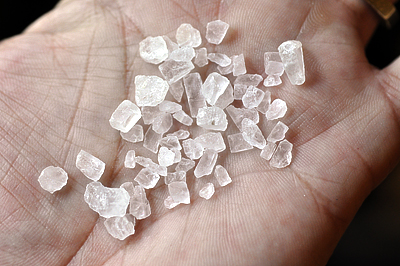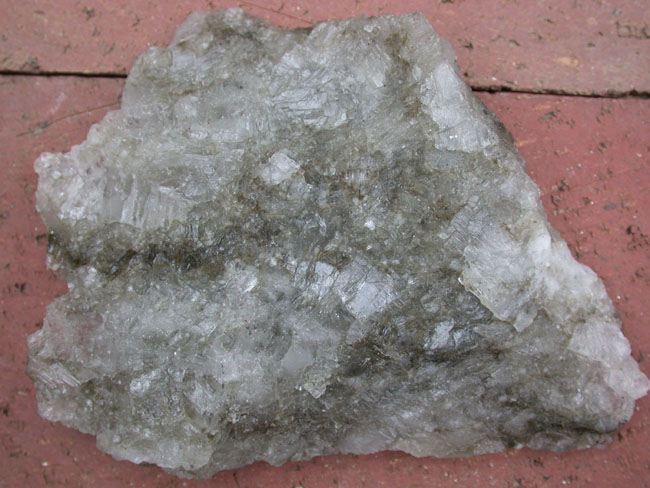Students will break minerals and observe their cleavage or fracture. Both atoms are regularly distributed within the cubic crystal lattice.
Halite ˈ h æ l ˌ aɪ t ˈ h eɪ ˌ l aɪ t commonly known as rock salt is a type of salt the mineral natural form of sodium chloride Na ClHalite forms isometric crystals.

. Halite next page breaks into cubes three cleavages at right angles and tastes like table salt. Halite is a sodium chloride. The elements must be arranged in a specific order.
These five halite crystal fragments show halites cubic cleavage three cleavages at right angles. The mineral is typically colorless or white but may also be light blue dark blue purple pink red orange yellow or gray depending on inclusion of other materials impurities and structural or isotopic. Halite has a cubic structure as a result of its ionic bonds and ion sizes.
This video is the first video for the minerals webquest. This causes the salt to break into cubes. Take for example the count as 8 after 1 break.
Now each can break differently in any one of the different ways as listed in the first break and so on. It has excellent cleavage in 3 directions which is why it breaks into cubes. Glass is not a.
Use Salt to Melt Ice Activity You can demonstrate the effect of freezing point depression yourself even if you dont have an icy sidewalk handy. Defects in the structure can cause the salt to turn a. Is halite hexagonal.
How many planes of cleavage does Halite and Galena salt and lead have. Salt which is also known as the mineral halite has cleavage in three directions. They tend to break into thin flat sheets.
Some minerals such as mica only cleavage in only one direction. Specifically definable chemical composition the elements that go into the structure of the mineral. How a mineral breaks depends upon the minerals structure.
How many planes of cleavage does calcite have. Show activity on this post. Students wearing safety goggles place a specimen on a block of wood.
What is the evidence for an ice cube being a mineral. Halite features an isometric cubic crystal system which simply means that the crystals in the mineral contain three axes that are all equal lengths and stand at 90 degrees from each other. Because its atomic structure arranges itself into little cubes 4.
One way is to make your own ice cream in a baggie where adding salt to water produces a mixture so cold it can freeze your treat. Three perpendicular why they break into cubes. This answer is not useful.
Why does halite break into little cubes. Ice cube is solid inorganic and is made by natural process. Cleavage planes are zones of weakness not destiny.
Cleavage means that the mineral contains weaknesses that cause it to break easier in one direction than in another. If you just want to see an example of how cold ice plus salt can get mix 33 ounces of. Why isnt glass a mineral.
How many planes of cleavage do feldspars have. Cleavage is an easily demonstrated property of minerals such as calcite halite and mica. This means that the positively charged sodium tends to be surrounded by as many negatively charged chlorine ions as possible and vice versa but that attraction is working against the repulsion of positive charges from each other and.
Play music were in the kitchen were surrounded by lots of different things that come from planet Earth come from the natural world we can divide those things into inorganic things like rocks and minerals for organic things like fruit and. A model to show how cleavage works. Note that minerals do not always break into perfect 6-sided cubes or even rectangles.
Halite is table salt and it is made of one sodium and one chlorine atom.



0 Comments